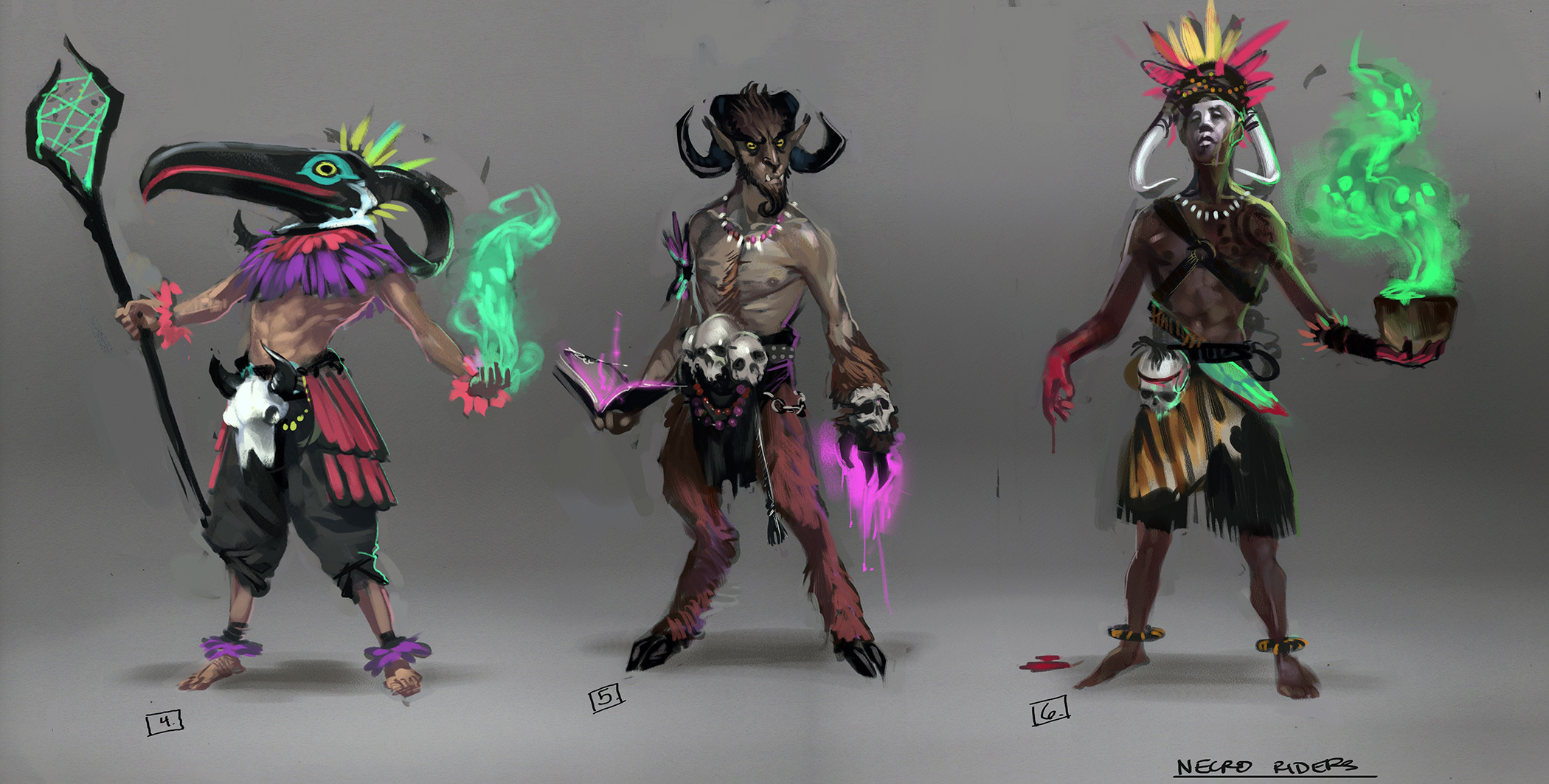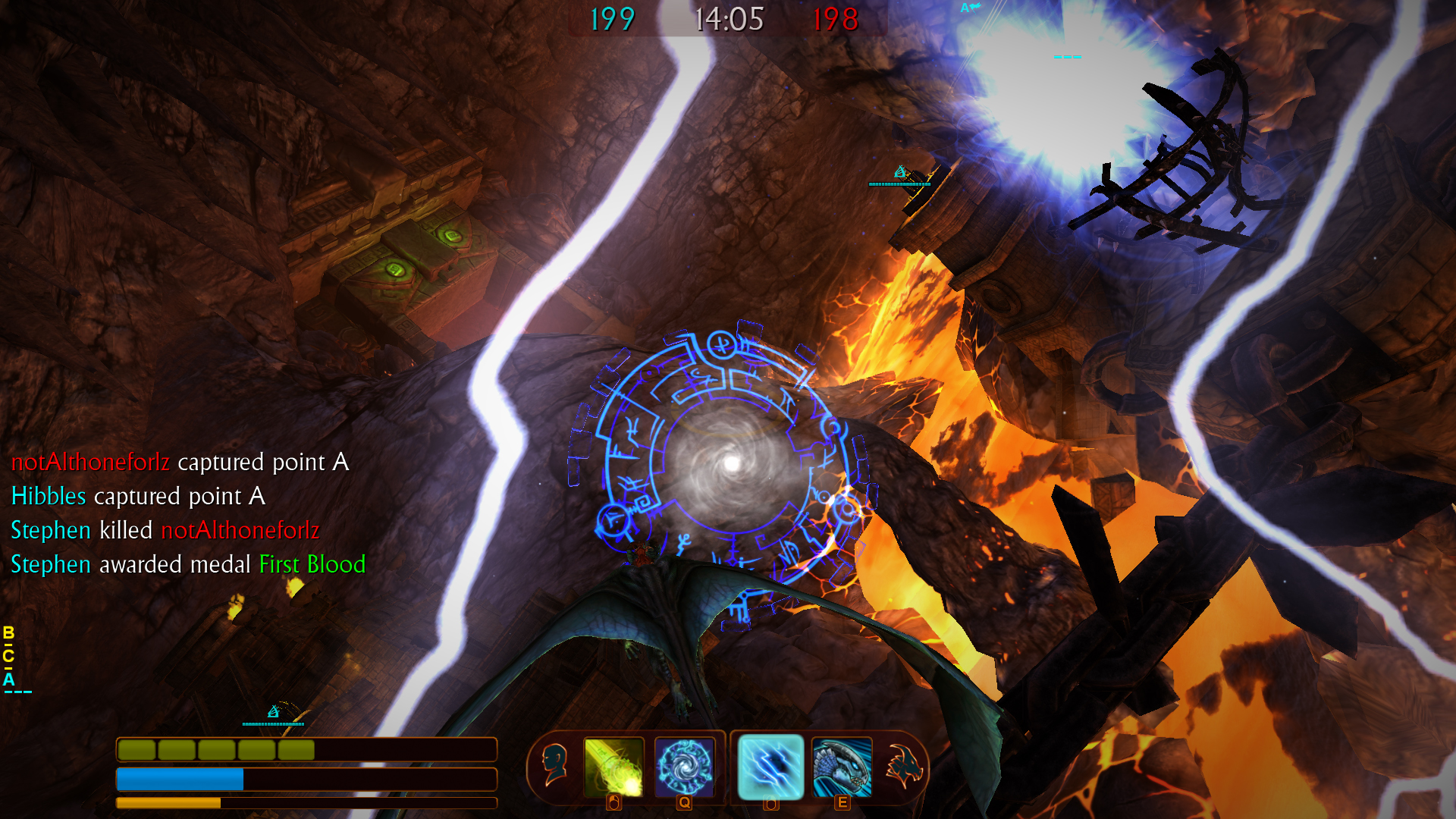
Hey folks! It’s time for another character spotlight post, and this time we’re talking about the Shaman! But this is going to be a bit different from our normal pattern here, because the first thing we’re delving into is how The Shaman came to be.
The Shaman was the fourth rider added to the game, right after the Pirate. And this was still pretty early in the project, when we were still sort of figuring out what was fun, and what sorts of abilities we needed… so it wasn’t like we knew what kind of roles were under-represented. I had a small stockpile of rider and dragon ideas squirreled away, but none of them really stood out as the obvious next thing to implement.
So then what do we do? Luckily, we had some really talented artists who were ankle-deep in concept art at the time, sketching potential dragons, riders, environmental concepts, basically everything. I’d chatted with some of them about the various concepts I had vaguely planned, and they started drawing them. And well, our weekly review meeting rolled around, and when we went through the week’s art tasks, we saw this …

… and that was it, more or less. I recall standing up, pointing at the toucan guy, and shouting " That’s it, we’re doing that one." It was new, it was different, and it was weird. And I mean the good kind of weird.
A lot of folks talk about how clean the character design in Team Fortress 2 is, and how each and every character can be picked out of a lineup from just its silhouette. The Shaman is an ideal example of this, because … c’mon, look at that mask! It’s awesome! It doesn’t get much more distinctive than a giant toucan mask! I mean, how does he even see out of that thing?
The obvious answer is that it doesn’t matter, because the concept is worth preserving no matter how ridiculous it might seem (also, he uses magic, duh). Ridiculous done correctly means distinctive, and that’s what we want for our characters. We’re aware of how easy it is to just hit the standard fantasy character tropes, clock out and call it a day. But we want Dragons of Elanthia to stand out, so we need this kind of weird stuff.

Anyway, that’s all well and good, but then how did we decide on the Shaman’s abilities? Well, this was early enough in the game’s life that there was still a lot of unexplored territory in terms of abilities, so we consulted the Giant Pile of Mechanics We Haven’t Used Yet. Once we found some that we wanted to implement, we considered what made sense from a flavor standpoint… the first one that worked out was a damage-over-time effect, which became the Shaman’s primary, Plague Hex. And then after settling on the flavor of plague, it was a natural choice to make the effect contagious among enemies who get too close to a plagued target.
(Fun fact: Originally Plague Hex’s effect only had a *chance* of being transmitted, but playtesting eventually led us to fix the rate of transmission at 100%. Otherwise it just looked like the ability wasn’t working. We might end up scaling that back in the future.)
" Ridiculous done correctly means distinctive, and that’s what we want for our characters."
The Shaman’s secondary ability, Voodoo Hoop, was another mechanic that we just wanted to try out but ended up really liking. Originally the goal was just to provide more support options, because at that time too many of our abilities were just different ways of dealing damage. But if there’s one thing we’ve learned in making new abilities, it’s that people love speed boosts. And in terms of support, being able to get your team’s Behemoth into the fight faster is a pretty solid contribution.

Now, we want characters with support-oriented abilities. However, we don’t want characters that aren’t fun to play on their own. And one thing we noticed about Voodoo Hoop was that while it could really help your team, it didn’t do much for you. So we thought about it for a while and made a simple change … instead of dropping the hoop behind you, we would spawn it in front of you. This way, you benefit from the hoop just as much as your allies do, so it’s no longer a purely altruistic ability. Not that there’s anything wrong with pure support-based characters, but in terms of immediate fun, selfish abilities are more satisfying.
Finally, the Shaman’s passive, Death Curse. This isn’t quite as interesting or nuanced of a story as the rest, because it just came from me wanting to try a snowballing character out in the game. It worked, so we kept it. And while we’ve played with the exact nature of the scaling, the core ability hasn’t changed. Of course, that doesn’t mean it isn’t powerful. During the alpha I’ve personally had some ridiculous matches as the Shaman, and that stacking damage chews through just about any dragon when you’re 19–0.
And to think, none of this might’ve happened if our artists hadn’t made some wacky concept art. If you want to know more, or have any questions/feedback/comments for us, let us know below!
Stephen Hmiel, Game Designer




